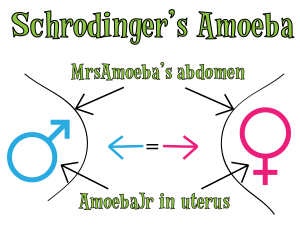In order to standardize names of organisms, back in the the 1700s, a Swedish botanist named Carl Linnaeus developed a two-name system. Referred to as, binomial nomenclature, it is the system with which we use–even still today–for naming organisms.

- Scientific Hottie
Carl Linneaus,
Image via Wikipedia
The word binomial means “two names.” So it is by using two names that we fully name each organism, in the same way that you have both a first and a last name. In binomial nomenclature, the first of the two names indicates the genus name. A genus is a group of closely related species. The second name is the species name; often it is a Latinized version of a word that describes a trait of the species, a location where the species can be found, or even an influential person in the discovery or science of that particular species. See the accompanying image.
 Click for full size
Click for full size
Finally, you need to know how organisms are classified. Scientists try to make maps, or trees, called cladograms to show the relationship between different species. It used to be that organisms that were organized in cladograms based on physical similarities the species shared with one another. For example, as the name implies, the horseshoe crab looks like a crab. In fact, it’s actually more related to spiders than it is to crabs!
Now that science has advanced greatly in the past half-century or so, cladograms are built using information scientists gather from DNA and RNA sequencing. We’re finding out that like the horseshoe crab, some things we thought were related aren’t really all that close! Have you ever heard of a panda or a koala being referred to as panda bear or koala bear?
Bears are members of the family Ursidae. The bears you think of when you hear the term “bear”, like the grizzly bear and the polar bear are in genus Ursus. Ursus is one of the genera of family Ursidae. Pandas are members of family Ursidae, but their genus is Ailuropoda. So they’re technically bears!
Koalas share the same class as the bears, Mammalia. That’s as close as they’re related. Koalas aren’t bears any more than dogs or whales are bears.
One last note: as you see in the image, the proper way to discuss a species is using the full name and italicizing it. The genus name gets capitalized, but can also be abbreviated by the first initial. For example, koalas would be Phascolarctos cinereus or P. cinereus and pandas would be Ailuropoda melanoleuca or A. melanoleuca.
- Evolution (amoebamike.wordpress.com)
- Taxonomy (amoebamike.wordpress.com)
Filed under: Biology, Great Scientists, Teaching | Tagged: Ailuropoda, Bear, Binomial nomenclature, Biological classification, Biology, Carl Linnaeus, Carnivora, Cladograms, Genus, Horseshoe crab, Koala, Panda, Polar bear, Science, Scientific Hotties, Species, Taxonomy, Ursidea, Ursus | Leave a comment »









